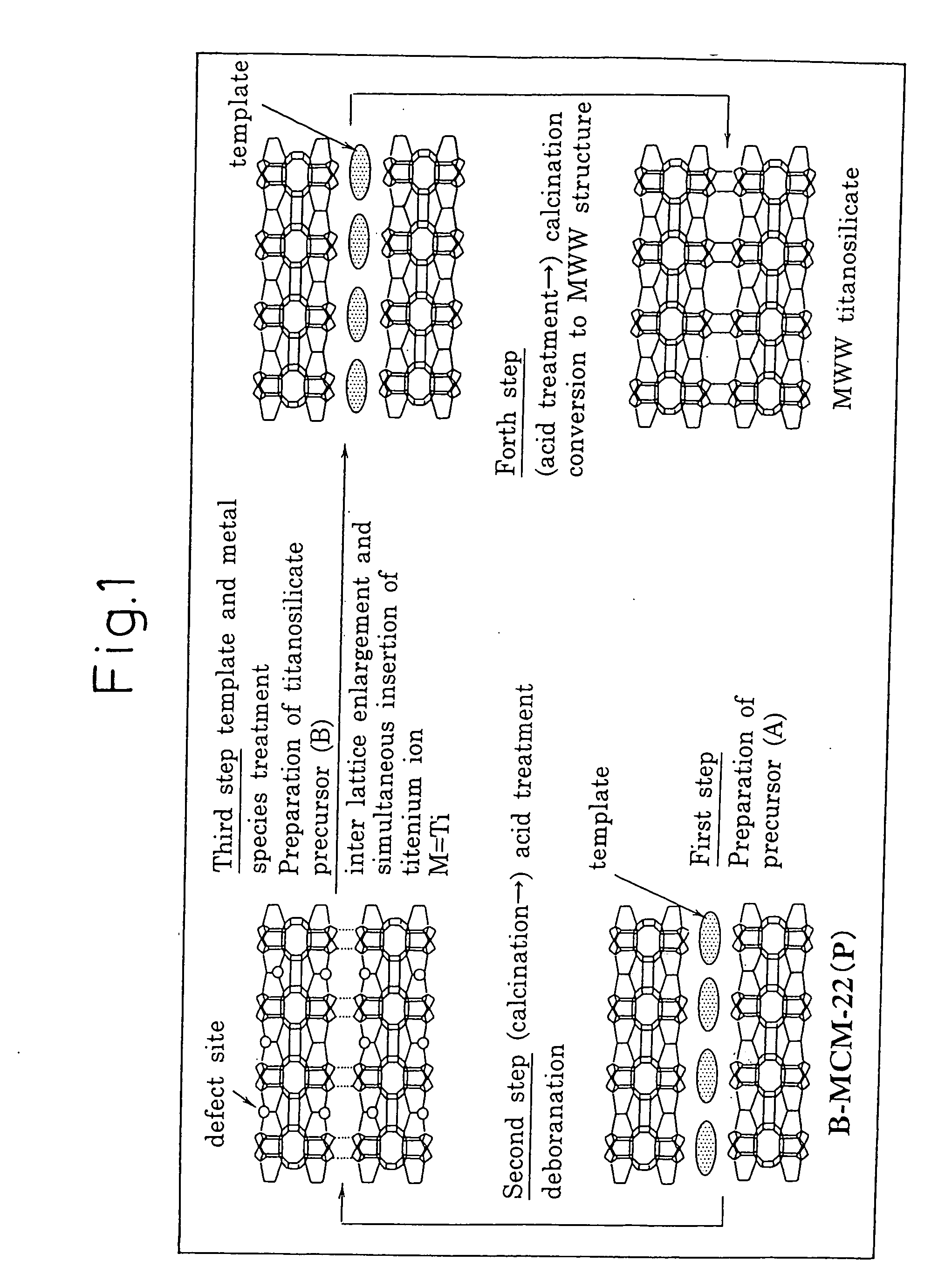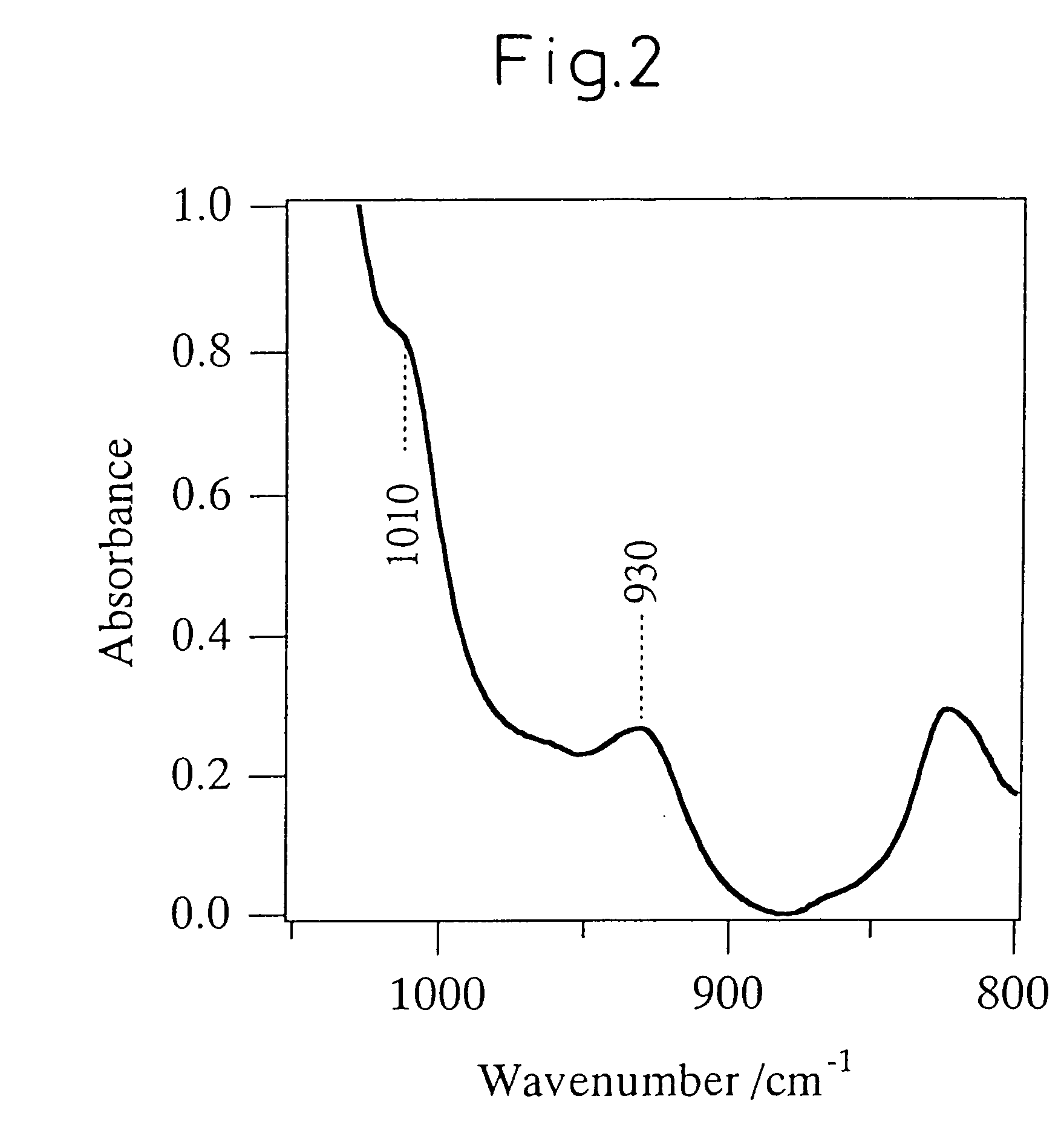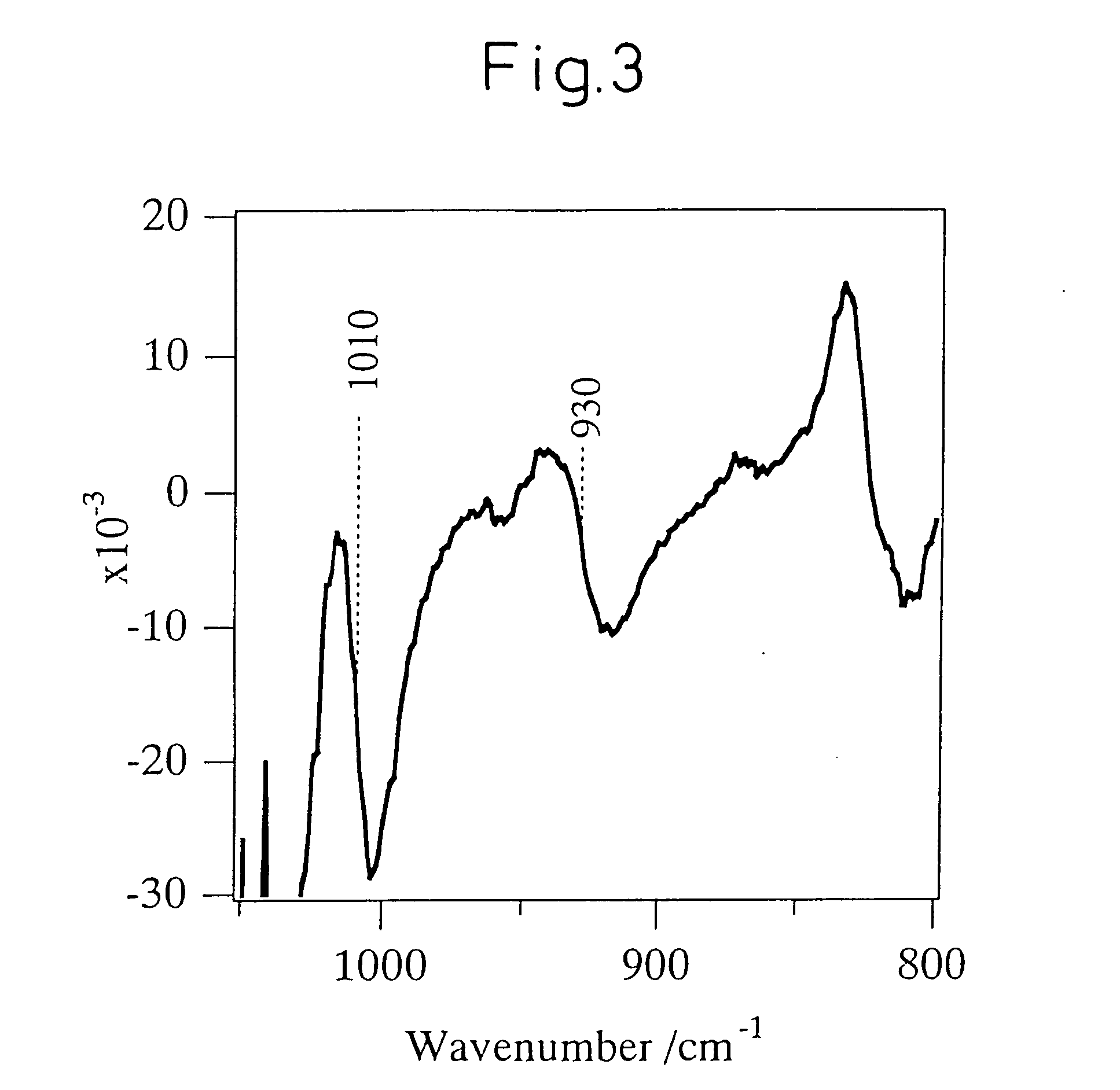Titanosilicate, process for its production, and its use in producing oxidized compound
a technology of titanosilicate and titanosilicate, which is applied in the direction of silicon compounds, physical/chemical process catalysts, organic chemistry, etc., can solve the problems of limited epoxidizing of olefin compounds, unable to achieve industrially sufficient reaction activity, and unable to achieve high selectivity
- Summary
- Abstract
- Description
- Claims
- Application Information
AI Technical Summary
Benefits of technology
Problems solved by technology
Method used
Image
Examples
example 1
Production of Catalyst 1
[Preparation of Borosilicate and Acid Treatment]
[0228] In 684 g of ion exchanged water, 243.2 g of piperidine (produced by Wako Pure Chemical Industries, Ltd., purity: 98%) (hereinafter simply referred to as “PI”) was dissolved at 25° C. to prepare an aqueous PI solution. To this aqueous PI solution, 165.8 g of boric acid (produced by Wako Pure Chemical Industries, Ltd., 99.5%) was added while vigorously stirring. After stirring for 30 minutes to completely dissolve the boric acid, 120 g of fumed silica (Cab-o-sil M7D) was added and the stirring was further continued for 2 hours to obtain a mixture of 1.SiO2:0.67.B2O3:1.4.PI:19.H2O (by mol).
[0229] This mixture was transferred to a 2 liter-volume Teflon (registered trademark of E.I. du Pont de Nemours and Company)-made autoclave and stirred for 120 hours at a rotation speed of 100 rpm at a temperature of 170° C. After stopping the rotation, the contents were cooled to 25° C. and the solid product was separa...
example 2
Production of Catalyst 2
[Preparation of MWW-Type Titanosilicate]
[0232] In an aqueous solution containing 2 g of ion exchanged water and 1 g of hydrogen peroxide (produced by Wako Pure Chemical Industries, Ltd., purity: 31%), 0.2 g of tetrabutyl orthotitanate (produced by Wako Pure Chemical Industries, Ltd., purity: 95%) was added at 25° C. The tetrabutyl orthotitanate was completely hydrolyzed by the stirring for 30 minutes and then dissolved by the stirring for 30 minutes. Thereto, 9 g of ion exchanged water and 10 g of Deborosilicate A having a boron / silicon molar ratio of 0.0217 prepared in Example 1 were added and the stirring was further continued for 10 minutes. Thereafter, the water content was evaporated over 3 hours at a temperature of 100° C. while stirring to obtain a mixture of 1.SiO2:0.033.TiO2 (by mol).
[0233] This solid mixture was placed in a 5 ml-volume Teflon (registered trademark of E.I. du Pont de Nemours and Company)-made beaker and the beaker was transferred ...
example 3
Production of Oxidized Compound Using Titanosilicate Catalyst 1
[0235] In a 20 ml-volume three-neck flask equipped with a thermometer, a reflux condenser and a magnetic stirrer, 0.58 g (10 mmol) of allyl alcohol and 3.9 g (5 ml) of acetonitrile were added and then the MWW-Type titanosilicate catalyst (50 mg) prepared in Example 1 was charged. The mixture was heated in a hot bath at 60° C. and vigorously stirred. Immediately after the temperature of the reaction mixture reached 57° C., 1.1 g (10 mmol as hydrogen peroxide) of an aqueous 30 mass % hydrogen peroxide solution was added to the system. By setting the reaction start time to this point, the stirring was continued until the passing of 30 minutes from the start of reaction. After 30 minutes from the start of reaction, the reaction mixture was immediately cooled with ice bath to stop the reaction. Thereafter, the reaction mixture was filtered to separate unreacted allyl alcohol, unreacted hydrogen peroxide, water, product and s...
PUM
| Property | Measurement | Unit |
|---|---|---|
| Temperature | aaaaa | aaaaa |
| Temperature | aaaaa | aaaaa |
| Fraction | aaaaa | aaaaa |
Abstract
Description
Claims
Application Information
 Login to View More
Login to View More - R&D
- Intellectual Property
- Life Sciences
- Materials
- Tech Scout
- Unparalleled Data Quality
- Higher Quality Content
- 60% Fewer Hallucinations
Browse by: Latest US Patents, China's latest patents, Technical Efficacy Thesaurus, Application Domain, Technology Topic, Popular Technical Reports.
© 2025 PatSnap. All rights reserved.Legal|Privacy policy|Modern Slavery Act Transparency Statement|Sitemap|About US| Contact US: help@patsnap.com



